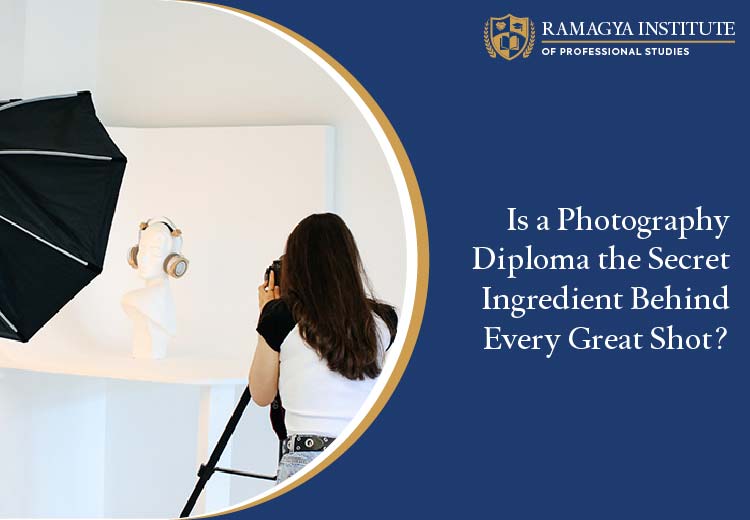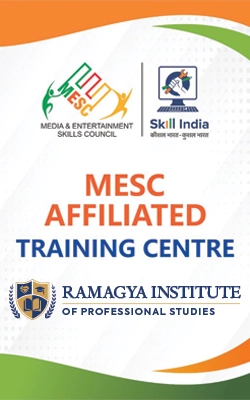Have you ever clicked a photo that looks amazing on your phone but seems dark, flat, or dull when you print it or see it later?
Isn’t that moment frustrating? It’s the time when you realize that an expensive camera or “good eye” simply isn’t enough. There’s a secret skill that turns a good holiday photo into an amazing shot that grabs everyone’s attention.
Many people believe that the ideal photographer is naturally gifted. While talent and passion certainly help, the key isn’t luck or a high-end camera, it’s structured learning, deep understanding, and professional training. The easiest method to unlock your potential is through enrolling in a well-structured diploma in photography.
What is a Photography Diploma?
A diploma in photography provides a course designed to help you master the science and art of photography. Unlike random online videos or simple tutorials, a diploma program gives you:
- Comprehensive Learning: Starting with understanding the camera’s settings, to mastering composition and lighting.
- Hands-on Practice: Real-world assignments that let you practice what you’ve learned.
- Professional Guidance: Gain knowledge from experienced instructors who offer feedback and guidance.
If you’re a beginner looking to improve your skills or if you’re a beginner looking to improve your skills or someone who wants to enhance their abilities, a diploma program will give you a solid foundation. Now that you know what a photography diploma covers, let’s explore why it’s a smart career choice.
Why Choose this Program?
Passion is important, however, the technical know-how can help you improve your photography. This is why a diploma can help:

- Structured Learning: A curriculum that covers all the essential aspects of photography.
- Skill Development: Learning various photography techniques, like portrait, landscape, product, and event photography.
- Industry-Relevant Knowledge: Getting to know the latest trends and technologies in the world of photography.
- Portfolio Building: Designing an attractive portfolio that shows your best work.
The diploma doesn’t simply teach you how to shoot pictures but also teaches you to think as a photographer, and to see the world with an alternative lens.
Ramagya Institute of Professional Studies: The Best Institute for Diploma in Photography
When it comes to pursuing a diploma in photography, Ramagya Institute of Professional Studies is one of the top institutes to study this course. Located in Noida, the institute offers a 12-month program that combines learning with hands-on practice.
Key highlights of the program include:
- Experienced Faculty: Learn from industry professionals who have years of experience.
- State-of-the-Art Facilities: Access to modern studios and equipment.
- Hands-on Training: Opportunities to participate in hands-on assignments and projects.
- Flexible Learning Options: Select between offline and online classes that fit your schedule.
At Ramagya Institute, the focus is not only on teaching photography, but on developing creative minds and preparing students to build successful careers in the industry.
What Will You Learn in the Diploma Program?
The photography diploma offered by Ramagya Institute covers a wide range of topics, which include:

- Camera Basics: Understanding the different kinds of cameras and their roles.
- Composition Techniques: Learning the rule of thirds, leading lines, and framing.
- Lighting: Controlling natural and artificial lighting to improve your photographs.
- Editing: Using software such as Adobe Photoshop and Lightroom to refine your images.
- Specialized Photography: Exploring niches like fashion, product, and event photography.
At the end of the course, you’ll have an extensive skill set with a portfolio which will show your capabilities.
Career Opportunities After the Diploma
Completing a diploma in photography opens up various career paths:
- Freelance Photographer: You can work on a variety of projects and grow the client base.
- Studio Photographer: Join photography studios specializing in portraits, events, or commercial shoots.
- Photo Editor: Use tools to edit photos along with working with photographers or media companies to enhance your skills.
- Content Creator: Utilize your photography skills to create content for blogs, social media or for marketing campaigns.
The need for professional photographers is increasing and a diploma can help you stand out in this highly competitive field.
In photography, passion gives you the spark, but professional training gives you direction. A diploma helps you turn your creative curiosity into real skills, confidence, and a lasting career.
If you are serious about taking photography forward as a career or even as a hobby, joining a structured program like the one offered at Ramagya Institute of Professional Studies can make a big difference. Always remember, every amazing photo begins with the right skills, the right guidance, and the right foundation.
FAQs
- Do I need any experience to get a photography diploma?
No, most of the courses are for beginners as well as people who already know a little.
- Is the Diploma in Photography by Ramagya Institute recognized in the industry?
Yes, Ramagya Institute’s diploma is respected and recognized by professionals. They are offering Government Approved programs.
- Can I do this diploma in photography while working?
Yes, the course is flexible so you can study and work at the same time.
- What camera or equipment do I need for photography?
A basic DSLR or mirrorless camera is good, but some institutes (if you are joining one) also provide equipment for practice.


